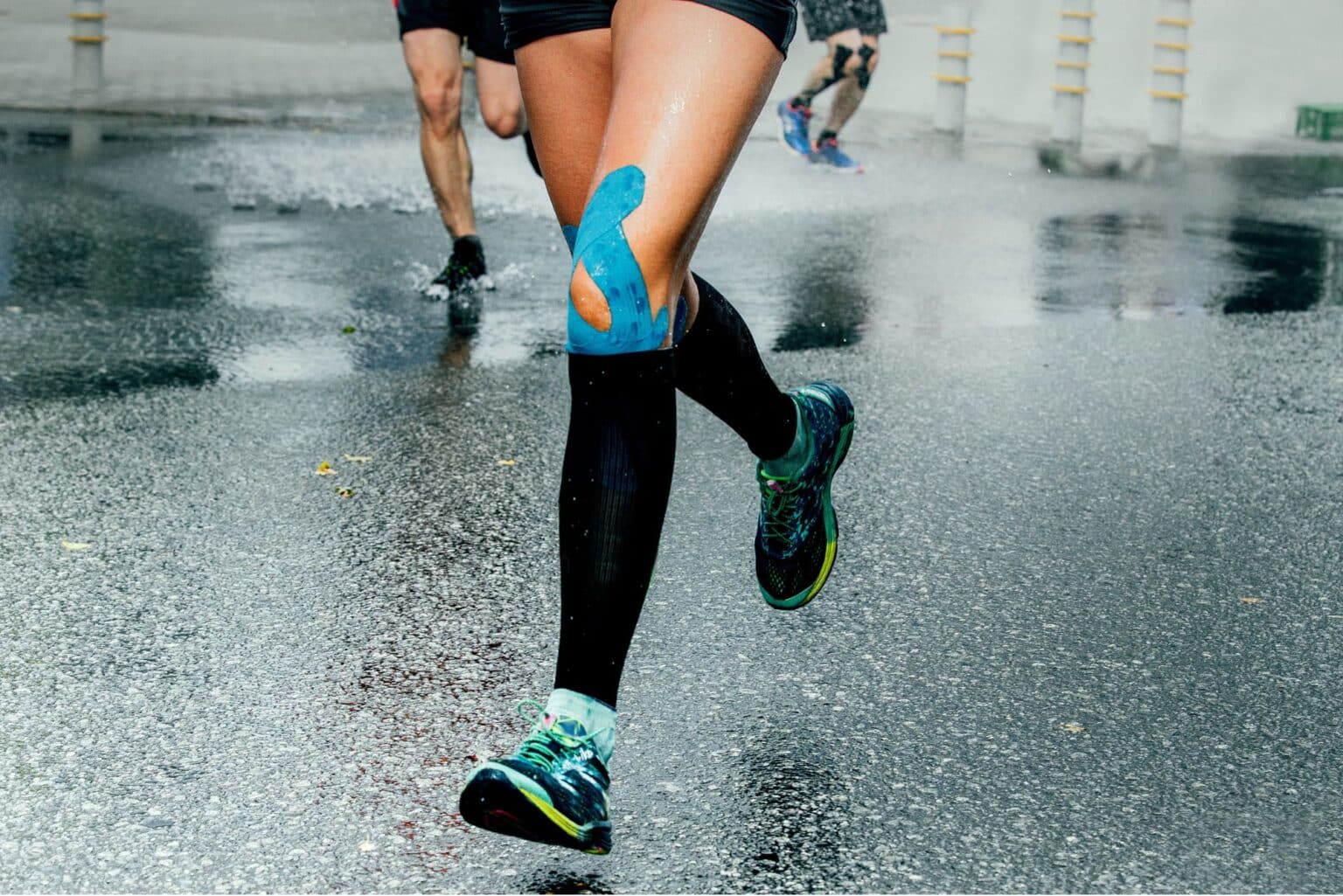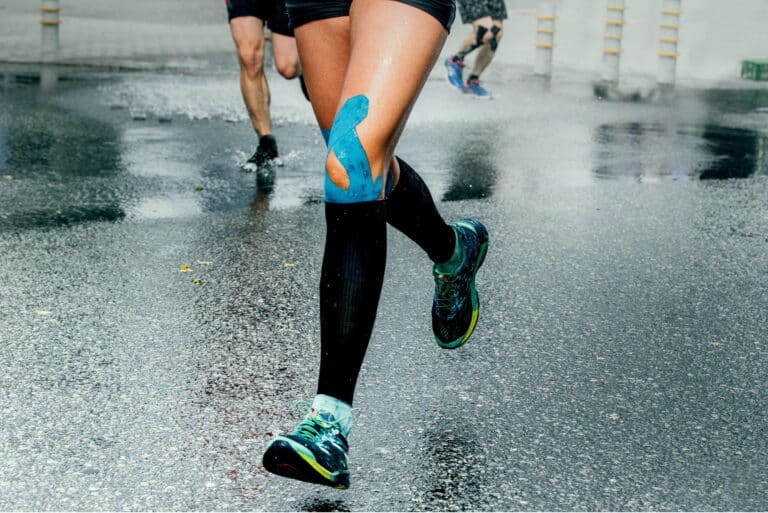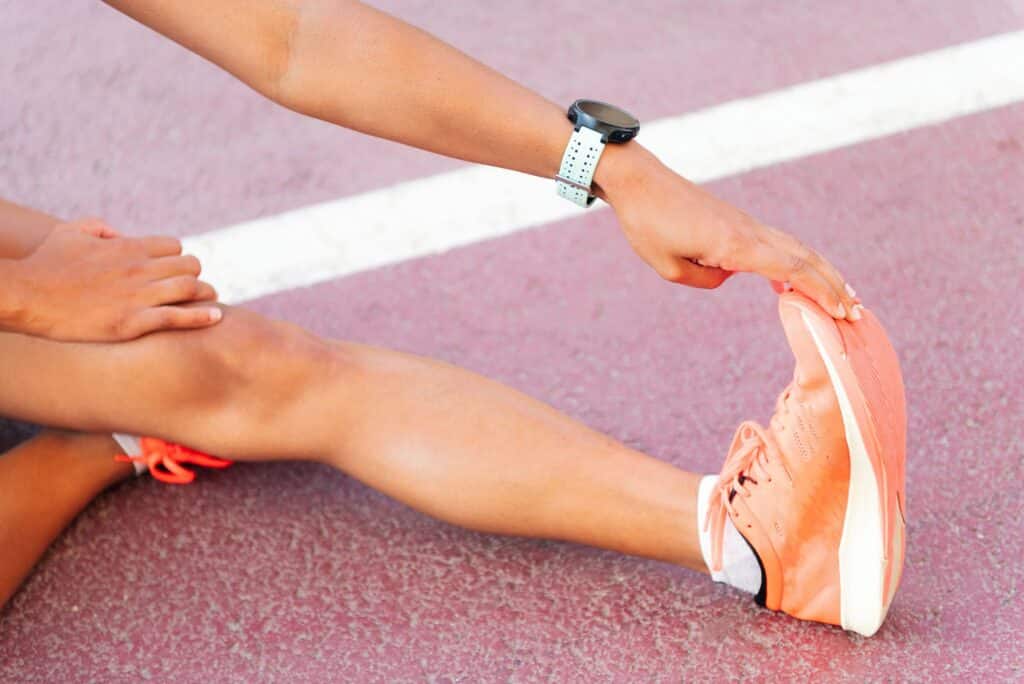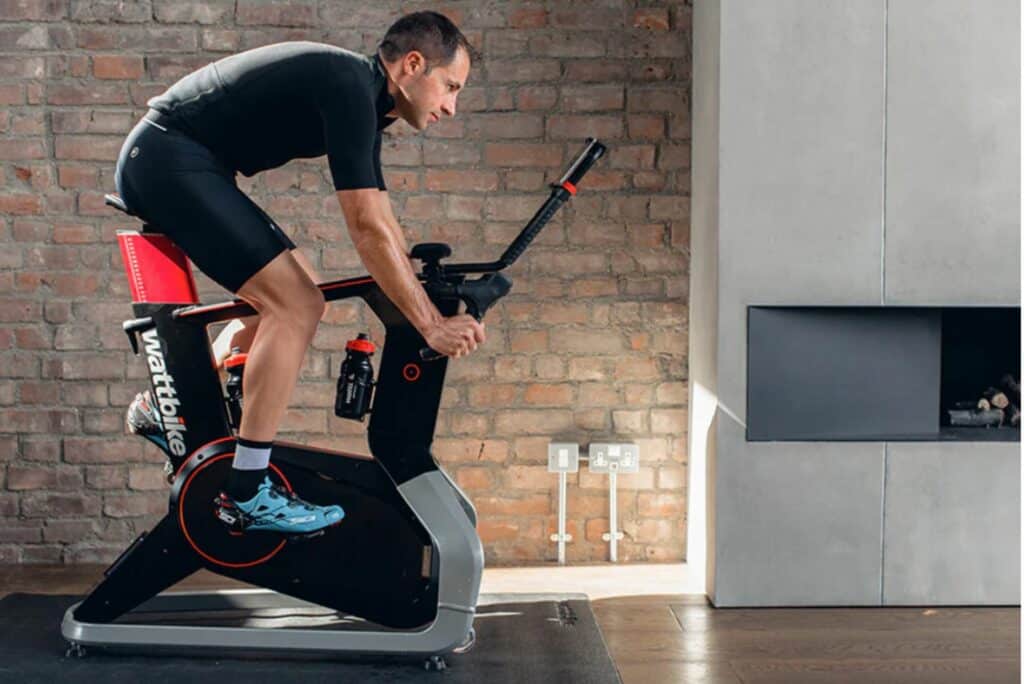


When it comes to running marathons, injury prevention is essential for any runner. Not only can injuries derail your training and race day performance, but they can also have long-lasting effects on your body. Fortunately, there are several effective tips that can help you avoid marathon injuries and ensure a successful race.
Here we share the most effective tips for avoiding marathon injuries.
Before we dive into the tips for avoiding marathon injuries, it’s important to understand the most common types of injuries that runners may experience during training or on race day. These include:
Now that you have a better understanding of common marathon injuries, let’s explore some effective tips for avoiding them.

Marathon-related injuries often stem from a combination of factors, including training errors, poor running technique, and inadequate recovery. One of the most common training errors is rapidly increasing your weekly mileage without allowing your body time to adapt. This can put excessive stress on your muscles, joints, and bones, leading to overuse injuries. To avoid this, follow the 10% rule: increase your weekly mileage by no more than 10% each week.
Poor running technique is another significant contributor to injuries. Overstriding, poor posture, and improper foot strike can all increase the risk of injury. Focus on maintaining a good running form by keeping your posture upright, your strides short and quick, and landing softly on your midfoot.
Inadequate recovery is also a major factor. Without sufficient rest, your body doesn’t have the opportunity to repair and strengthen itself, making you more susceptible to injuries. Ensure you get enough sleep, eat a balanced diet, and incorporate rest days into your training plan to allow for proper recovery.
Assessing your injury risk is a crucial step in preventing marathon-related injuries. Several factors can influence your risk, including your training history, running technique, and overall health. Novice runners, for instance, are more prone to injuries due to their lack of experience and conditioning. If you’re new to marathon training, start slow and gradually build up your endurance.
Your running technique also plays a significant role in injury risk. Poor biomechanics, such as overstriding or improper foot strike, can lead to various injuries. Consider having your running form analysed by a professional to identify and correct any issues.
Additionally, your overall health and any pre-existing conditions can impact your injury risk. Runners with a history of injuries or chronic health conditions should take extra precautions and possibly consult with a healthcare professional before starting a marathon training programme. By understanding and addressing these factors, you can significantly reduce your risk of injury.

Building a safe marathon training foundation is essential for injury prevention and long-term success. Start with a well-structured training plan that gradually increases your training volume and intensity. Here at Coach the Run, we provide a range of expertly crafted Marathon Training Plans designed to help you achieve your running goals. This approach allows your body to adapt to the demands of marathon training without overloading it.
Proper running technique is also vital. Focus on maintaining good posture, a midfoot strike, and a cadence of around 180 steps per minute. These elements can help reduce the impact on your joints and minimise the risk of injury.
Adequate recovery is another critical component. Ensure you get enough rest, eat a balanced diet rich in nutrients, and stay hydrated. Incorporate rest days and active recovery sessions, such as light stretching or yoga, into your training plan to allow your body to repair and strengthen itself.
Creating a personalised training plan is key to effective marathon training. A tailored plan considers your individual needs, goals, and risk factors, providing a structured approach to training. Start by setting specific, achievable goals, such as completing a certain number of miles per week or reaching a target pace.
Your training plan should include a mix of running, cross-training, and rest days. Gradually increase your training volume and intensity to avoid overloading your body. Incorporate cross-training activities like cycling or swimming to build overall fitness and prevent overuse injuries.
Listen to your body and adjust your plan as needed. If you experience any pain or discomfort, take a step back and allow time for recovery. By creating and following a personalised training plan, you can train safely and effectively, setting yourself up for a successful marathon experience.
Take your marathon training to the next level with our Personalised Marathon Training Plan crafted by London Marathon winner and UK Athletics-certified Running Coach (CiRF), Mike Gratton. With his unparalleled expertise, Mike will design a tailored training plan built around your unique goals and abilities. Gain exclusive access to his coaching and unlock your full potential with a plan that sets you up for success.
One of the most important factors in preventing marathon injuries is having the right running shoes. Ill-fitting or worn-out shoes can lead to a range of foot and leg injuries, as well as affect your overall performance. Here are some tips for selecting the appropriate running shoes:

Avoiding marathon injuries starts with smart training and following expert training advice. Most injuries can be prevented through proper preparation and technique. Gradually increasing your mileage is key to minimising strain on your body. Additionally, focusing on proper running form and taking environmental factors into account can further reduce injury risks.
Strengthening your feet and ankles is another effective strategy for improving performance and preventing injuries. Exercises like foot and ankle strengthening drills or jumping exercises can enhance foot elasticity, a crucial element of efficient running. Finally, if an injury does occur, proper recovery is essential—be sure to rest the affected area to prevent further damage.
Increasing training load too quickly is a common cause of marathon injuries. Your body needs time to adapt and build endurance, so it’s important to follow a training plan that gradually increases your mileage. A general rule of thumb is to not increase your weekly mileage by more than 10% each week.
In addition to running, endurance athletes can benefit from incorporating cross-training activities like cycling or swimming to help prevent overuse injuries by giving their bodies a break from the repetitive motion of running. It’s also essential to incorporate rest days into your training schedule to allow your body to recover and repair itself.
Incorporating cross-training can address muscular imbalances and biomechanical issues, reducing the likelihood of injuries. It can enhance overall muscle strength and flexibility, which is crucial for preventing injuries.

Rest and recovery are vital components of injury prevention. Giving your body time to rest allows it to repair any damage, manage injuries, and rebuild stronger. Make sure to include at least one full day of rest into your weekly training schedule, as well as incorporating foam rolling or stretching exercises after each workout.
Rest periods play a crucial role in recovery and injury prevention, allowing the body to heal and adapt to increased training demands. Without adequate rest, the risk of chronic injuries rises significantly, underscoring the importance of incorporating recovery into any training plan. By scheduling regular rest days, you reduce physical strain, support the body’s natural healing process, and create a balanced approach to long-term fitness and performance.
A proper warm-up and cool-down are essential to prepare your body for running and help prevent injuries. A dynamic warm-up, including activities like jogging, high knees, and butt-kicks, can increase blood flow to the muscles and improve their elasticity. Similarly, a proper cool-down routine should involve stretching exercises to reduce muscle tension and aid in recovery post-run.

Dynamic stretching involves moving your muscles through a full range of motion, preparing them for the activity ahead. This type of stretching can help improve performance and prevent injuries by increasing blood flow and promoting joint mobility. Include dynamic stretches in your warm-up to properly prepare your body for a run. Spend about 15 minutes on these stretches to ensure you’re ready to hit the ground running.
Static stretching involves holding a stretch in one position for 20-30 seconds. This type of stretching can help improve flexibility, reduce muscle soreness, and prevent injuries when done after a run. Focus on muscles that feel tight or fatigued from your run, such as your calves, quadriceps, and hamstrings.
Pilates is an excellent way to stretch and recover after a run. Why not read out our article: Pilates Stretches for Post-Run Recovery? It features a collection of guided exercise videos from Liz Patient at Pilates for Runners, designed to seamlessly integrate into your post-run routine. These targeted stretches focus on key muscle groups, improving flexibility and reducing the risk of injury, so you can keep running at your best.

Foam rolling is a self-massage technique that involves using a foam roller to release tension and tightness in muscles. It can help improve flexibility, reduce muscle soreness, and prevent injuries by breaking up knots and adhesions in the muscles. Incorporating foam rolling into your post-run routine is an effective way to aid in recovery and keep your body healthy.
Check out our article, Foam roller exercises for runners, plus 5 exercises to help tired muscles recover, to learn how to use a foam roller effectively and discover exercises specifically tailored for runners. Short on time? Senior MSK Physiotherapist and Founder of Winchester Physio and Health, Jack Winyard, demonstrates five essential foam rolling exercises designed to enhance recovery and boost endurance in your post-run routine. These targeted techniques focus on key areas for runners—including the legs, hips, and IT band—that bear the most strain during training.
Incorporate these moves into your post-run routine to recover smarter and run stronger!
Strengthening exercises can help improve muscle imbalances and correct biomechanical issues that may lead to sports injuries. Focus on strengthening your core, hips, glutes, and other key muscle groups involved in running. Incorporating strength training into your routine can also improve overall performance and make you a stronger runner.
Kettlebells are a fantastic addition to any strength training routine, offering a versatile way to build power and stability. Discover how to seamlessly incorporate them into your workout with our article: The Best Kettlebell Workouts for Runners. These expertly designed exercises, demonstrated by Jack Winyard, Senior MSK Physiotherapist and Clinic Manager at Winchester Physio and Health, are tailored to enhance strength, improve stability, and reduce your risk of injury – all to help you perform better on your runs.
As a runner, your feet and ankles take on a lot of impact and stress. Therefore, it’s important to incorporate exercises specifically targeting these areas in your training routine.
Exercises like single-leg balance exercises, calf raises, and ankle rotations can help strengthen the muscles around the foot and ankle joints, reducing the risk of injuries. It is also essential to work on foot mobility by incorporating stretching exercises such as toe curls and arch lifts.
Foot and ankle exercises are essential for building strength and resilience, helping marathon runners to prevent injuries and improve performance.
A strong core and lower legs are crucial for maintaining proper running form, preventing injuries, and improving overall performance. Incorporating exercises like planks, bridges, lunges, step ups and squats can help strengthen your core muscles and the muscles in your lower legs.
To maximise the benefits of these exercises, try using resistance bands or weights to add extra challenge and increase muscle strength. Also, consider adding plyometric exercises such as box jumps or burpees to improve power and agility.

Balance and proprioception are essential for maintaining stability and preventing injuries while running. Proprioception refers to your body’s ability to sense where it is in space, while balance is the ability to maintain a stable position.
Incorporating drills like single-leg hops or balancing on one leg can help improve both of these aspects. It’s also beneficial to incorporate exercises that challenge your balance, such as standing on an unstable surface like a Bosu ball or a foam pad.
Runners often experience foot pain, such as plantar fasciitis or metatarsalgia. Another common issue is medial tibial stress syndrome (MTSS), which affects the shin area. If you’re struggling with foot pain during training, it’s essential to address the issue and find ways to manage the pain while continuing your training.
Incorporating specific exercises like toe curls, calf stretches, and arch lifts can help alleviate foot pain. It’s also crucial to listen to your body and take rest days when needed to allow for proper recovery.
Custom orthotics are shoe inserts designed to provide support and correct imbalances in your feet. They can be beneficial for runners experiencing foot pain or other issues related to improper foot mechanics.
If you’re considering using custom orthotics, it’s essential to consult with a healthcare professional first to determine if they are right for you. They may recommend getting fitted by a specialist or undergoing a gait analysis before making any decisions.
If you’re experiencing any immediate pain during or after a run, there are several techniques you can try for quick relief to avoid injury. These include using ice packs to reduce inflammation and pain, taking over-the-counter anti-inflammatory medication, and using compression socks or sleeves to improve blood flow.
It’s also essential to properly stretch and foam roll after your runs to alleviate muscle tension and reduce the risk of injury. And if the pain persists or becomes unbearable, it’s crucial to seek professional help from a medical practitioner or physiotherapist.
Overall, incorporating these various exercises and techniques into your post-run routine can significantly aid in recovery and injury prevention. Consistency is key when it comes to maintaining a healthy body and preventing injuries.
For minor aches and pains, over-the-counter pain relievers like ibuprofen or naproxen can be helpful. These medications work by reducing inflammation and blocking the production of pain-causing chemicals in the body.
However, it’s important to use these medications as directed and not rely on them regularly. If you find yourself needing to take these medications frequently, it may be a sign that you need to address any underlying issues or seek professional help to prevent future injuries. Remember, proper rest and recovery are also crucial for preventing injuries and maintaining overall health as a runner.
If you’re experiencing chronic or severe pain, it’s essential to consult a specialist for proper diagnosis and treatment. A physiotherapist or doctor can help identify any underlying issues and provide tailored exercises and techniques to address them.
Additionally, they may recommend specific stretches, strengthening exercises, or treatments such as massage therapy or acupuncture to aid in recovery and prevent future injuries.
As a runner, taking care of your body is crucial for improving performance and preventing injuries. Incorporating these various exercises and seeking professional help when needed can significantly benefit your overall health and running journey. Remember to listen to your body, stay consistent with training, and prioritise rest and recovery for long-term success.

In conclusion, incorporating these exercises and techniques into your training routine can significantly benefit marathon runners in preventing injuries and improving performance. It’s essential to focus on strengthening the foot and ankle muscles, building a strong core and lower legs, practising balance and proprioception, managing foot pain, using custom orthotics if necessary, and utilising immediate pain relief techniques when needed.
Additionally, it’s crucial to consult with a healthcare professional for proper diagnosis and treatment of any chronic or severe pain. Remember to listen to your body, stay consistent with training, and prioritise rest and recovery for long-term success in your running journey. With these tips in mind, you’ll be well on your way to completing a successful and injury-free marathon.
Happy marathon training!
Join our mailing list to stay up to date with the latest UK running events, training tips, and exclusive offers on running products. Rest assured, we value your privacy and would never dream of selling your address. Sign up now…
Share this article
As humans, we all experience moments of grief and stress at some point in our...
Plyometrics are exercises that use explosive movements like jumping and bounding to enhance muscle power...
Did you know that the world record for completing a half marathon is 57 minutes...
Running is one of the simplest and most accessible forms of exercise, and it’s a...
When the hot flashes strike, motivation is lacking, muscles and joints ache, and sleep becomes...
Running is a popular form of exercise that can help you lose weight and improve...
We’re here to make sure you’re up-to-date with the latest running tips, events and product discounts – we’ve always got your back! Rest assured, we value your privacy and would never dream of selling your address.
BONUS: Sign up today and receive a FREE code for our Sub-4-Hour Marathon Plan